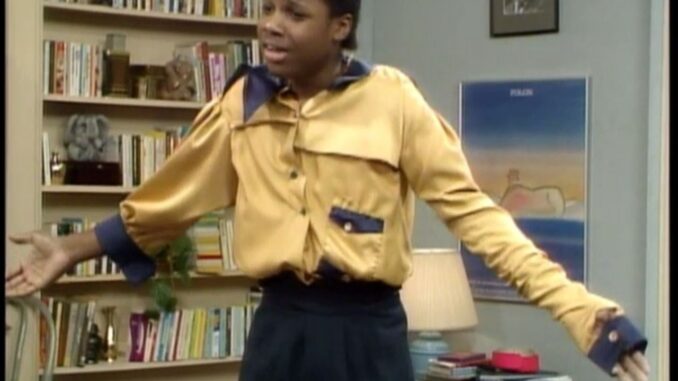
The Ten Best THE COSBY SHOW Episodes of Season One

Welcome to a new Sitcom Tuesday and the start of our series of posts on the best episodes from The Cosby Show (1984-1992, NBC), the early linchpin of the peacock network’s Must-See-TV lineup and a show often cited as responsible for resurrecting the situation comedy! I’m happy to report that all seasons have been released on DVD.
A doctor and a lawyer juggle their two careers with the raising of their five kids. The Cosby Show stars BILL COSBY as Cliff Huxtable, PHYLICIA RASHAD as Clair Huxtable, LISA BONET as Denise Huxtable, MALCOLM-JAMAL WARNER as Theo Huxtable, TEMPESTT BLEDSOE as Vanessa Huxtable, and KESHIA KNIGHT PULLIAM as Rudy Huxtable. SABRINA LE BEAUF recurs as Sondra Huxtable.

Regular readers of this blog know that I’m fairly consistent with my disregard for sitcoms that feature more children than adults, as I find that this structure often gives a series misplaced carte blanche to rely on the young cast members’ cuteness for laughs that otherwise aren’t fostered by the writing and/or the presentation of the characters. (I’m also staunchly against unearned sentiment, in which these shows joyously wallow.) However, The Cosby Show proves that there’s an exception to every rule. With two adults and a cast of four (or depending, on the episode, five) regular children, this is a series that embraces its family-oriented design while recognizing the need to support its inherent charm with character-driven content. Well, at least that’s how it is in the beginning of the show’s eight-year run…
Produced by Marcy Carsey and Tom Werner, a powerful duo whose presence on this blog is just beginning, this star vehicle for Bill Cosby, the stand-up comic best known for his work on I Spy and a two-season sitcom of his own from 1969-71, initially began with a different concept — as a comedy about a blue collar family headed by two working-class parents. It was reportedly at the insistence of Cosby’s wife that the premise be altered to the one with which we’re familiar today, about two white collar professionals bringing up an upper middle class household. Now, I don’t often like talking about race within the context of this series because I find that over-engaging in this discussion obfuscates an honest look at the material. That is, when examining the depiction of race on The Cosby Show, there are those who celebrate the way it presented African Americans, thus crediting the show mostly for its image, which is itself irrespective of content, while there are those who decry the series for not addressing race in a more hard-hitting way, thus rejecting the show based on a failing to meet expectations imposed by an outside and irrelevant determinant. I don’t really want to deal with either.

But the conversation is unavoidable, so let’s do it now. Cosby and co-creators Ed. Weinberger and Michael Leeson were drawn to the redrafted concept because it would be a relative novelty. In fact, the only other successful serialized depiction of affluent African Americans on a comedy series had come in The Jeffersons, a show that we discussed here last year. One among Lear’s dynasty, that long-running series lost its vitality when its creator’s style of comedy became outmoded in the ever-changing ’80s. Not only was The Jeffersons a shell of its former self by its final 1984-85 season (the only year during which it was on the air with The Cosby Show), but the series — for the first two-thirds of its run — had made race relations the crux of its core concept and an element that fundamentally impacted the majority of its stories. Cosby, while deeply conscious about the image he wanted his show to project (because he knew that, rightly or wrongly, their single fictional family would be held up to represent many other families), he didn’t want his show to be about race. The family’s skin color was obvious, and if it came up in a story, it came up in a story — it wouldn’t actually be the story.
In this regard, Cosby was really paired with the right co-creators, for Weinberger (who had worked with Cosby on his earlier sitcom) and Leeson — as many of you will remember from past coverage — are both figures who had since come out of Tinker’s MTM, an enterprise with a style entirely different from Lear’s, whose writers, I believe, would have been incapable of honing a series that used race subliminally. (That’s no knock against Lear’s works, just an observation about the more direct and confrontational nature of his shows, many of which thrived as a result of this boldness.) Weinberger and Lesson, on the other hand, came from a world where story was never more important than the characters within it — a mode of operating that, if not providing instant guffaws, still boasted believable scripts with relatable characters.
